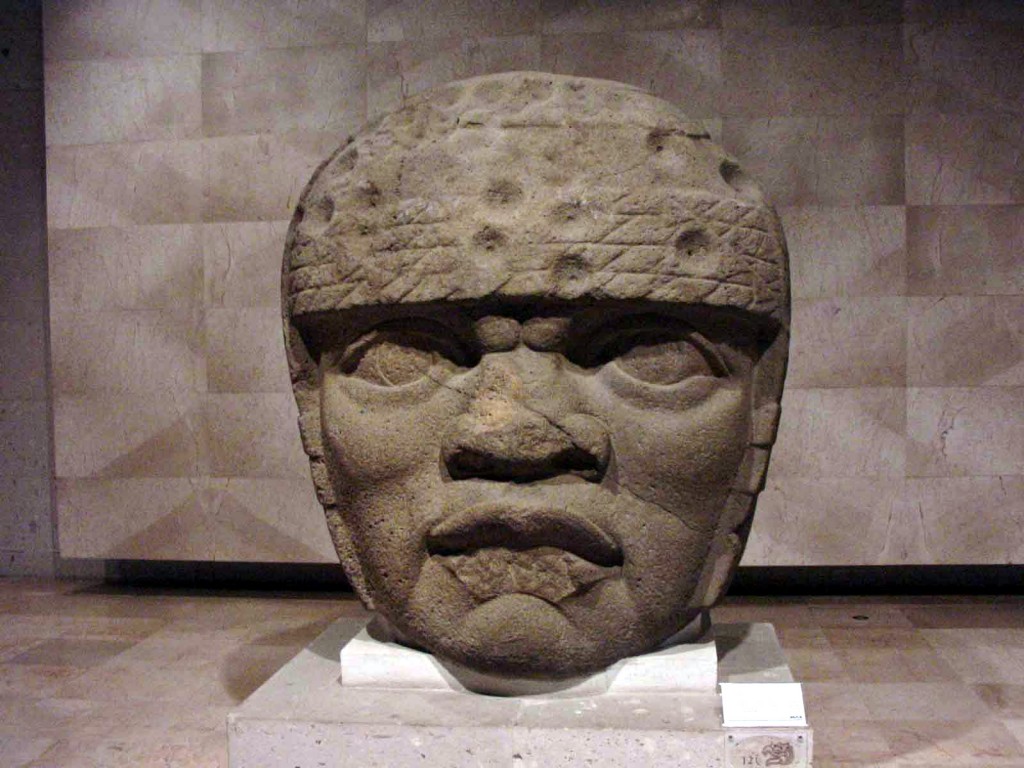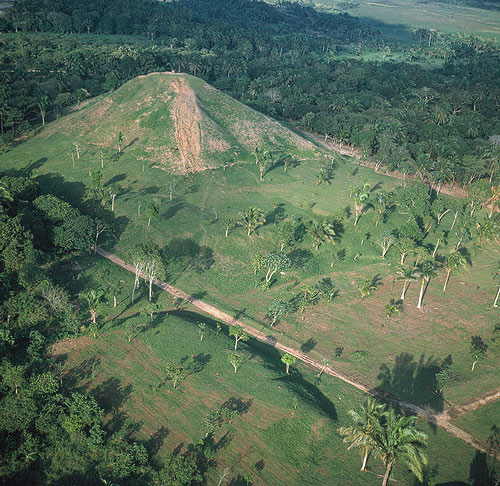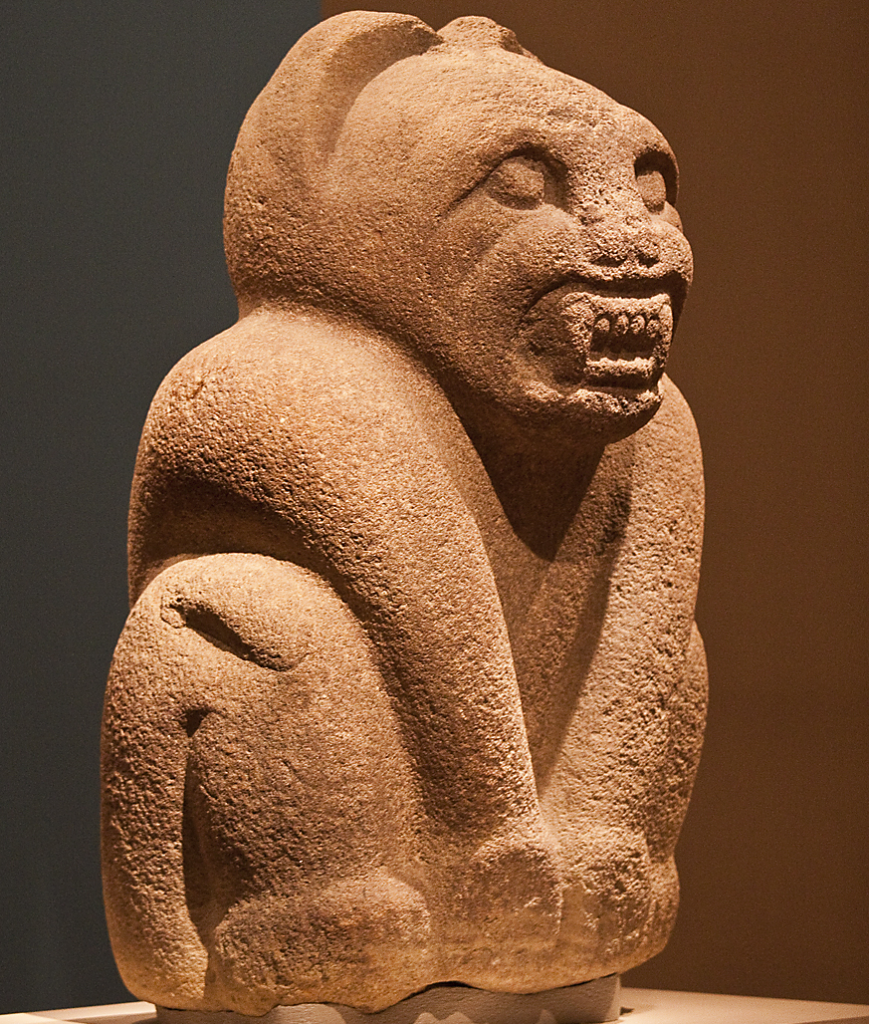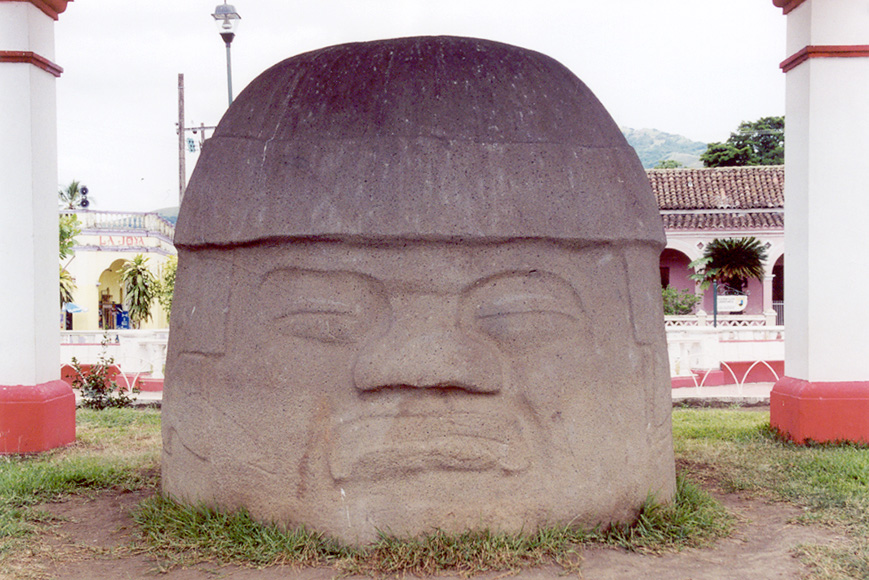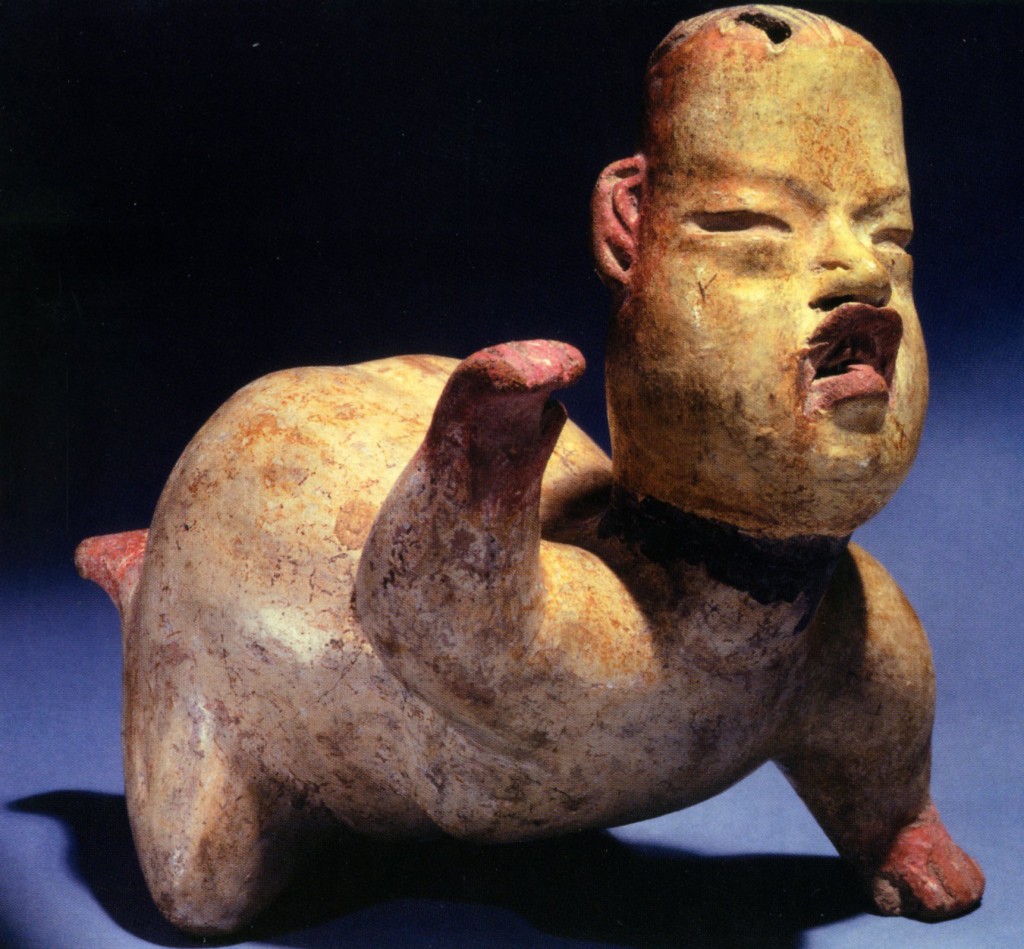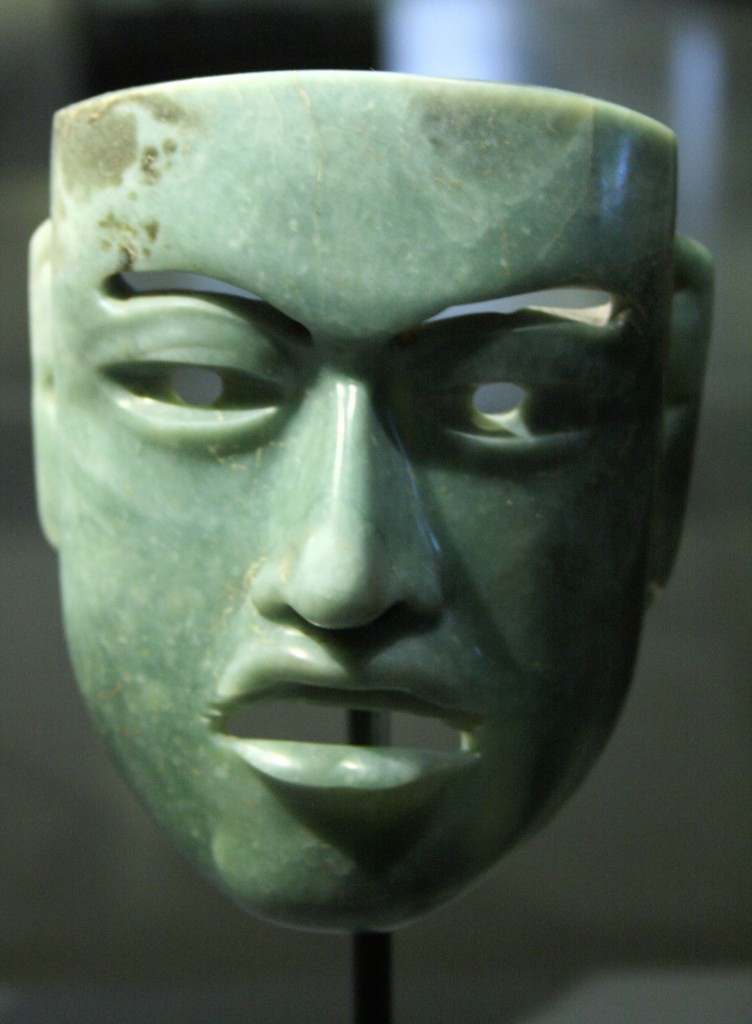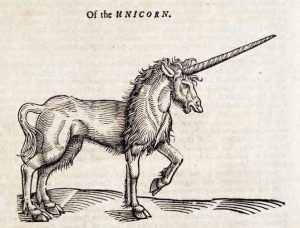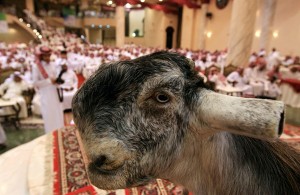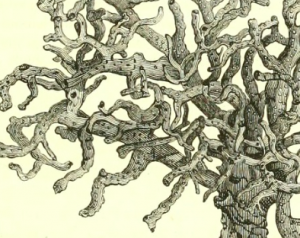Olmec: Incredible Mesoamerican Art
These upper echelon big-wigs have the need to show off their laziness and strength and a desire to win jealous glances. Artistry suddenly finds funding as the rich search for things to spend their cash on; useless trinkets are born. Items made of jade, obsidian, and magnetite have all been found in the Olmec region, many of the materials used were originally sourced in distant locations, so it’s safe to assume there was a bustling trade network in the region.
The Olmec society was first centred at San Lorenzo and later at La Venta where some amazing trinkets and structures are to be found. The Great Pyramid (below), the largest Mesoamerican structure of its time, even today after 2500 years of erosion, still rises 34 m off the flat earth.
Buried deep within La Venta, lay opulent, labor-intensive “offerings” – 1000 tons of smooth serpentine blocks, huge mosaic pavements, and at least 48 separate deposits of polished jade celts (a type of tool), pottery, figurines, and hematite mirrors.
Around 400 BC the population of La Venta slowly declined. We don’t know exactly why the Olmec decided to move on but there are some theories that attempt to explain the shift. Some archaeologists theorise that tectonic movements might have substantially changed local river courses making the place unusable for a large population of farmers and/or a trading culture. Another theory is that volcanic ash forced the Olmec to move on, for now the jury is out.
After 400 BC the area was still inhabited but all of the tell-tale signs of the Olmec had disappeared.
The most iconic examples of Olmec art are their large stone heads. Scholars believe the heads depict rulers or important Olmec folk but they can’t be sure of course. The colossal heads vary in size with the biggest, the Rancho La Cobata head (below), sitting proud at 3.4 meters. To put that into perspective that’s longer than eleven 30 cm rulers.
The Olmec heads appear to have been carved a dozen or so miles from where they were discovered and then transported to where they eventually rested. Some estimate that moving the heads would have taken 1500 people a few months.
The striking facial characteristics of these heads have lead some scholars to debate whether the Olmec were in fact of African descent. Although the general and sensible opinion is that this wasn’t the case, you can see why that conclusion was drawn.
Olmec styled items have been found hundreds of miles from La Venta. This could be due to long-range trade, colonization of other areas or simply wandering Olmec artisans. Some of the “Olmec-style” jade masks (below) are so-called because, to date, none have actually been found in official Olmec settlements. But these Olmec-style masks have been found spread across a wide area, some buried in a ritual manner as long as 2000 years after they were originally made.
Others believe that part of the reason the Olmec style appears to have traveled so far is that the ancient people of Mesoamerica associated the Olmec style with wealth and power and simply copied their style for kudos.
If I was an ancient person I would be proud to have one of their impressive stone heads in my garden. I would use it as a bird bath.

